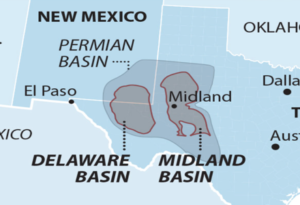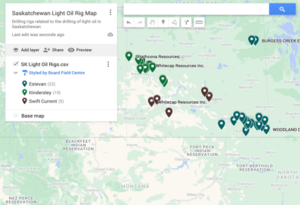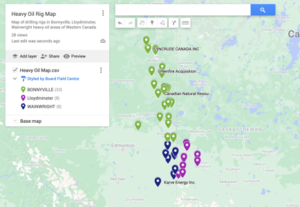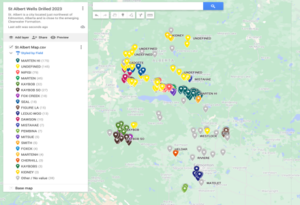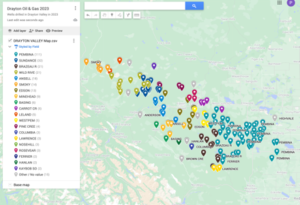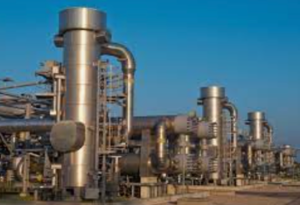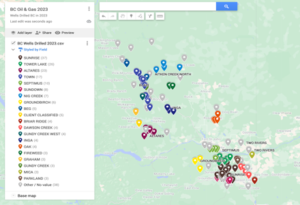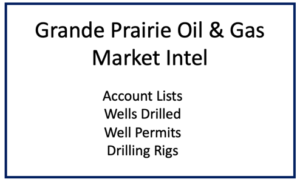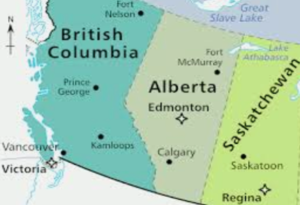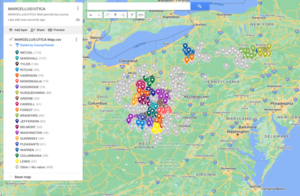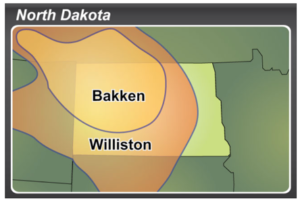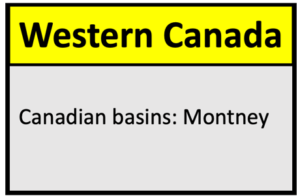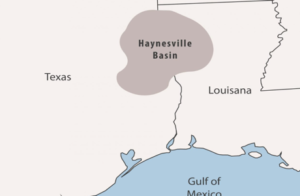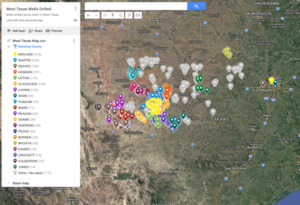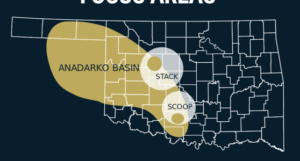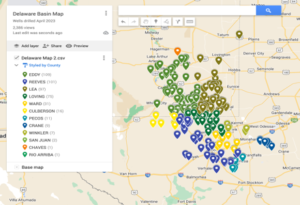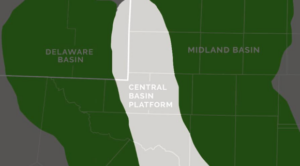In the first half of 2020, a period that saw West Texas Intermediate oil prices crash to historic lows, Chevron completed trials and then quickly adopted the emergent simul-frac completion for use across its sprawling Permian asset that encompasses more than 2 million acres.
Oil & Gas Data Download
Chevron Wells Drilled Since 2023
The simul-frac, also called a twin frac and other terms, has been warmly embraced across the US shale sector since it enables one fracture stage in two adjacent wells to be stimulated at the same time. This requires extra capital and careful planning, but in line with other first adopters Chevron’s experience has proven a net positive.
Amos Kim, a completions advisor at Chevron, coauthored URTeC 5340 that details the operator’s simul-frac project which he described as “an astounding success.” The high-level results below compare against Chevron’s use of the conventional zipper frac method.
25% fewer pump hours
31% reduction in friction reducer (a result of less wellbore friction)
30% lower cycle times, 8% avg. reduction in pad cost
“In other words, simul-frac enables four frac crews to achieve the same output as five pumping single well zipper operations,” the Chevron paper noted on that last bullet point.
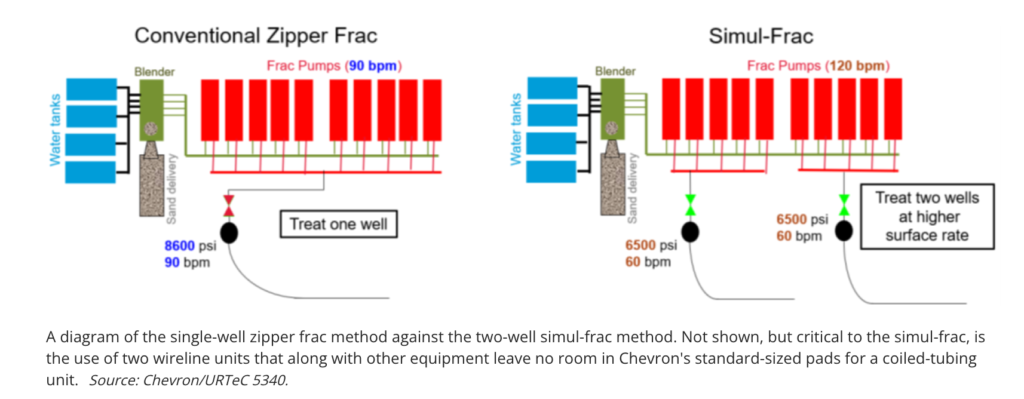
Key to Chevron’s approach is that its typical 16-pump fleet, which can pump a single well at 90 bbl/min, has enough spare horsepower to effectively be split into two fleets pumping at a rate of 60 bbl/min.
Other simul-frac fleets have called for adding around 25% more pumping horsepower to the job. But to reap the biggest savings it could, Chevron decided to maximize what it could get out of a single, standard fleet of 16 units.
The lower treating pressures with this simul-frac approach required Chevron to make some notable design changes, including shorter stage lengths and more stages per well. It said these adjustments ensure that completion crews can maintain their desired rate per perforation cluster or the well’s target cluster efficiency.
These changes increase completion time on a per-well basis, but the overall reduction of several days on location combined with the savings on friction reducer additives negates these additions.
From the podium, another coauthor elaborated on why moving 30% faster yields only an 8% savings.
“You’ve got additional equipment on this pad. There’s additional costs to deliver higher rates of tangibles, such as water and sand to the location, and those additional stages,” said Andrew Ruhl, a competitive performance advisor with Chevron. He added, “You’re making extra wireline runs, you’re making extra [perforation] gun runs, and you have extra plugs to drill out. So, there’s nuance there to capturing the cost savings.”
More on the tradeoffs Chevron has accepted in its simul-frac journey:
- Chevron needs two wireline units, plus extra pumping units on standby for repairs.
- This leaves no room in standard pad size for a standby coiled-tubing unit to quickly address screenouts, other problems.
- Low margin for error—time-consuming mistakes risk negating cost-advantages.
The Chevron authors stressed the importance of adequate planning and logistics in realizing the upsides of the simul-frac. Kim also highlighted that Chevron has a large inventory of three- and five-well pads. Odd-number well pads represent a hiccup for the simul-frac, which is easiest to execute on pads with an even number of wells.
“Not only that,” said Kim, “we were also at times targeting different formations at the same time. So, three wells would be in one formation and two others will be in another formation. That really poses some difficulty in trying to do a simul-frac on every single stage.”
He added that Chevron staff got “creative” and developed planning tools to help the operator better understand where and how the simul-frac should be done to maximize its benefits. Kim said that includes successfully adapting simul-frac sequencing to stimulate three-well pads.



